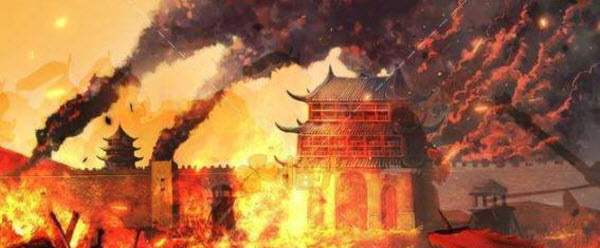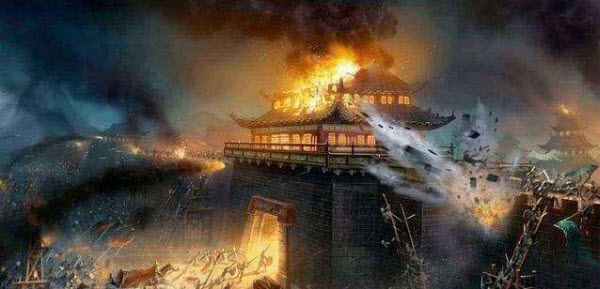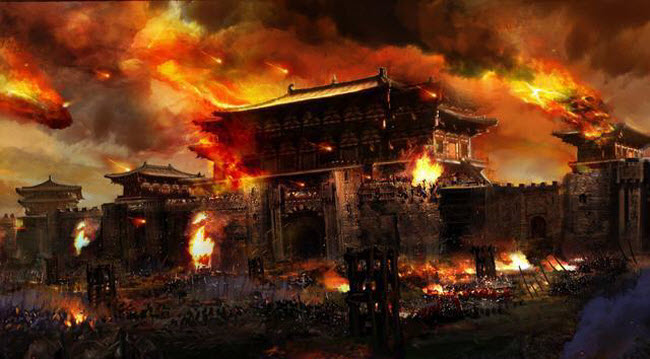The world was stunned by the devastation caused by the atomic bomb, leading some to question if a single bomb could really cause such destruction. Despite the massive human tragedy that followed the explosion, it was not the first of its kind. History tells us that in the 17th century, one of the most violent explosions occurred in a city, known as the Wang Jun Chang Explosion or the Great Tianqi Explosion, which took place in the Chinese capital, Beijing. The destruction was so severe that it not only killed thousands and obliterated the city’s infrastructure but also led to the downfall of the Ming Dynasty. To this day, the cause of the explosion remains a mystery, with theories ranging from an ammunition depot explosion to a meteor impact.
The incident occurred on May 30, 1626. It began as a routine day at the Wang Jun Chang arsenal near the Forbidden City in Beijing. The arsenal was one of the largest in China at the time, producing gunpowder, cannons, arrows, and other weapons in large quantities. Between 9 and 11 a.m., according to official reports, a loud noise was heard coming from the northeast and gradually moved southwest through the city. This was followed by dust clouds and shaking of buildings. A tremendous flash of light, accompanied by a massive explosion, shattered the sky, tearing apart the earth and plunging the sky into darkness. Everything within a 2-kilometer radius was completely obliterated—large trees, homes, people, and even 3-ton guardian lion statues were seen displaced far from their original positions.

The Wang Jun Chang Explosion resulted in catastrophic casualties and injuries. Approximately 20,000 people were killed, and many more were injured, including those working on the restoration of the Forbidden City. It is said that the explosion also caused the death of the emperor’s only heir, a seven-month-old child, who was crushed by a falling stone slab and later died from his injuries. Even Dong Qiwei, the Minister of Public Works overseeing the six arsenals in China, suffered severe injuries and retired from his position. Many government officials in the city were either killed, injured, or went missing during the explosion, with some reportedly buried alive in their homes.

The explosion was so powerful that it was heard over 2,000 kilometers away in Changping. Its shockwaves affected areas up to 150 kilometers away. Scientists estimate that the explosion had the force of 20,000 tons of TNT, roughly equivalent to the atomic bomb dropped on Hiroshima during World War II. Some accounts even describe a thick cloud that rose into the sky and lingered over the city for hours, resembling the mushroom cloud seen after atomic explosions.
In the aftermath, the city lay in ruins, and it took a long time for recovery. Beyond the human loss and infrastructural damage, the most profound impact was the end of the Ming Dynasty. The emperor died a year after the explosion, and his brother succeeded him, whose plans to exclude key figures in the state led to the empire’s collapse 18 years later. Some believed the explosion was divine retribution for the increasingly corrupt and poorly governed Ming Dynasty, a belief fueled by the mysterious nature of the explosion. The emperor Tianqi responded by distributing relief to the people as an act of penance.
Even after centuries, the true cause of the Wang Jun Chang Explosion remains debated. One theory suggests it was due to the vast amount of gunpowder in the arsenal and poor storage practices, which made the explosion inevitable. Nearby reserves of gunpowder might have exacerbated the disaster. However, some find this explanation insufficient, arguing that the destruction was too extensive for it to be attributed to mishandling alone. They propose that a meteor impact could explain the initial roar and the subsequent widespread damage. Proponents of this theory point to reports of falling metallic fragments and the mushroom-shaped cloud, which could be attributed to the meteor’s trail. However, there is no evidence of meteor explosions at that time, and other less plausible theories include volcanic eruptions or extraterrestrial attacks.
To this day, the Wang Jun Chang Explosion remains an enigma, with no definitive answer on whether it was the result of human error or divine justice. Nevertheless, it remains one of the worst explosions ever recorded.
